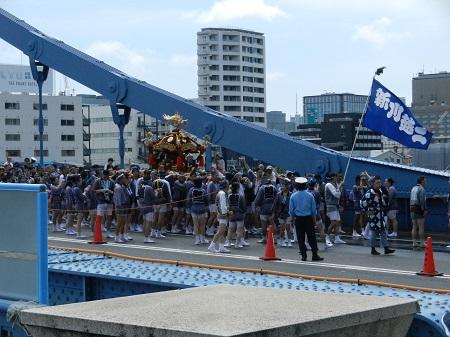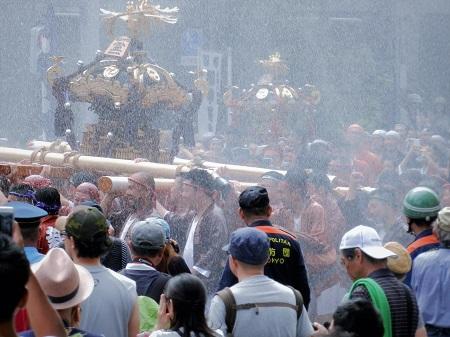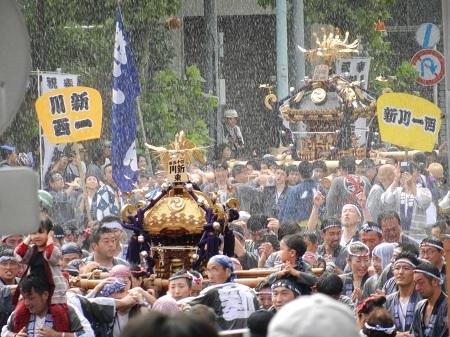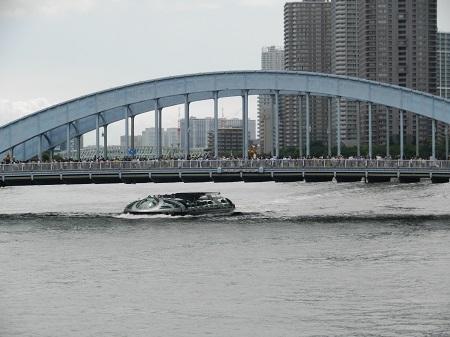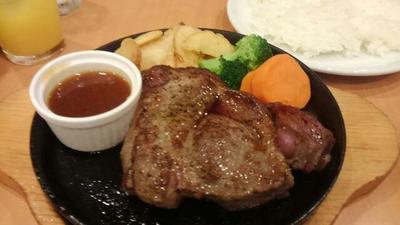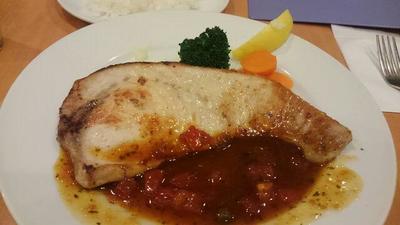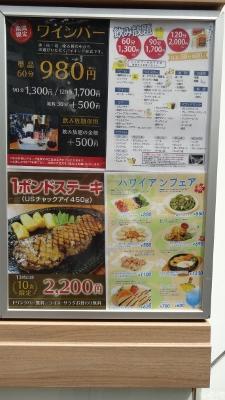Tokyo Station on Saturday evening. Oh, it was a hot day today.
I had to go to Kachidoki Station in Chuo-ku from now on, so I searched for a bus stop bound for Fukagawa Garage, which is out of Yaesu Exit.
You can get to Kachidoki by using a bus that leaves the south exit of Marunouchi. Moreover, while watching the streets of Yurakucho, Ginza and Tsukiji. But today, I tried to make a Toei bus from Yaesu Exit.
If you are not familiar with Tokyo, the bus stop on this route may be a lot of unfamiliar names.
17:46 Yaesu Exit of Tokyo Station
17:47 Street 3-chome
17:49 2, Hacchobori
17:50 Kameshima Bridge
17:51 Shinkawa
17:54 2, Shinkawa
17:55
17:57 3, Minato
17:58 Akashicho
18:00 In front of St. Luke Hospital
18:01 7, Tsuiji
18:03 Kachidokibashi Minamizume
18:04 In front of Kachidoki Station
This bus passes through a deep area with a dark downtown color in Chuo-ku. The number is small, but every time I ride it, it tastes different, so I sometimes want to ride it. We lined up in line, boarded the bus, and today we took a position in front of the bus for the first time.
The bus runs straight from Tokyo Station on Yaesu Street toward Shinkawa and Tsukuda. The left side of Yaesu Street was the old Nihonbashi Ward, and the right side was Kyobashi Ward, so it runs along that border.
After passing the "Peace Bell" at the intersection with Chuo-dori, you will stop at the mysterious bus stop "Dori Sanchome" with a mysterious name.
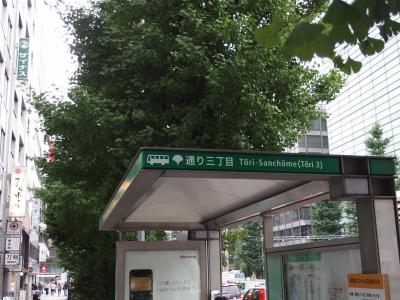
The origin of the name is neither Yaesu Street nor Chuo-dori. It seems to come from the old town name "Tori".
Today, Chuo-dori is the path of the Tokaido that stretched from Nihonbashi in the Edo period, and the name of the elongated town that flourished along the road between Nihonbashi and Kyobashi, the first section of the Tokaido is "dori". It is a commercial area that flourished since the beginning of the Edo period.
Although the name of the town disappeared in 1973, it left its name at the bus stop. It's a nice bus stop.
The bus passes through the business district, crosses the Kameshima Bridge over the Kamejima River, and enters the Shinkawa area.
The name "Shinkawa" is derived from the name of the canal that used to flow east and west, but it has now been reclaimed.
At the next Sunday Fukagawa Hachiman Festival, 55 mikoshi shrines will be cruising around here. It's a very favorite summer festival because mikoshi crosses the two popular bridges of the Sumida River.
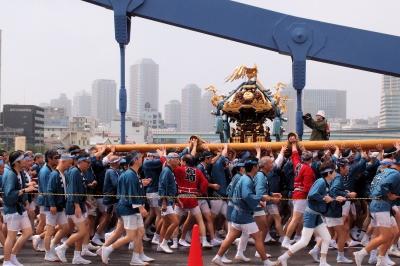
From Fukagawa, we cross Kiyosu Bridge, pass through Hakozaki and here Shinkawa districts, cross the Sumida River at Eitai Bridge, and return to Tomioka Hachimangu Shrine in Fukagawa. In particular, the area around Eitai Bridge is a popular area full of spectators.
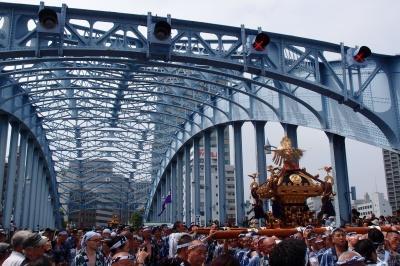
The scenery of "watering", which is a feature of this festival, can be seen in various places, and just looking at it, it is a summer festival where you can experience and impress the passion of the people involved in this festival.
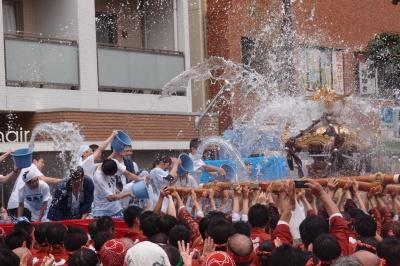
In addition, since the Shinkawa area is used for a break time for lunch, it is also a place where the mikoshi museum is in the meantime. It may be a good place for those who want to see the magical mikoshi itself.

By the way, if you go straight along Yaesu-dori as it is, you will cross the Sumida River at Chuo-ohashi Bridge. But the bus turns right after a goodbye on Yaesu Street.
If you think it has turned, stop immediately at the bus stop of Shinkawa 2-chome, and when you start, turn left without crossing Takahashi in front of you. I'm getting in a hurry.
This hurriedness raises doubts that the bus may have to choose Minami Takahashi to cross the Kamejima River.
Minami-Takahashi is a stylish bridge among the bridges around here. It uses the members of the former Ryogoku Bridge, which was rebuilt during the reconstruction of the Great Kanto Earthquake, so it is full of retro feeling. Choosing this bridge to cross the river also makes this bus a lot of trouble.
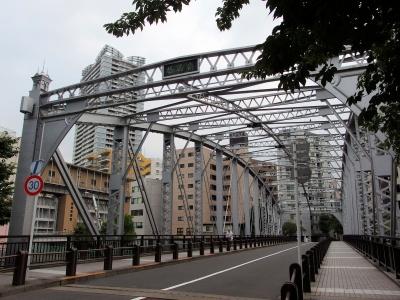
The bus runs in front of Teppou Inari Shrine. The bus stop is also "Tegunsu". It's an interesting name. It is said that the Sushima, which was once near the mouth of the Sumida River, had a long and elongated shape like a gun, but the interesting name is a little boring.
Akashicho is the end of the elevated bridge of Tsukuda-ohashi Bridge. We enter an area called "the birthplace of ◯◯◯" with many stone monuments and monuments.
This area was the first to enter a new foreign culture in Tokyo as a `` Tsukiji Reservation Site '' after the opening of the country, but the origin of the name Akashicho in the first place is similar to the scenery of Akashinoura in Hyogo Prefecture There is a theory that it was.
People in the Edo period must have regarded Tsukuda Island, which floats beyond the sea of Akashicho, as Awaji Island, as well as imagine that the beautiful Edo seascape was spreading.
I stopped at a bus stop in front of St. Luke Hospital under the Bridge of Peace. The godmother of this "Bridge of Peace" is Shigeaki Hinohara, who died at the age of 105 the other day.
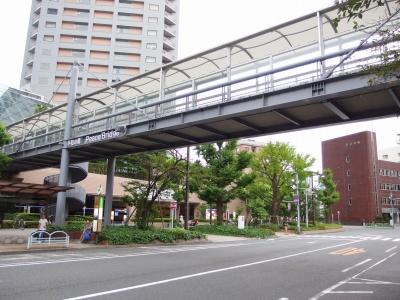
I hear the sound of the bell. It is the sound of the bell at 18:00 at St. Luke Hospital. A good melody flows in a place with a good atmosphere. Along with the sound of this bell, Dr. Hinohara's thoughts on peace will be passed down under the sky of Akashicho.
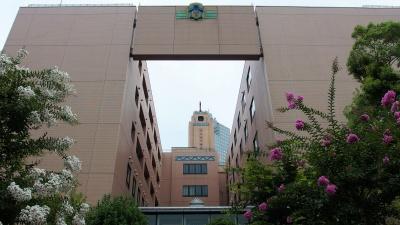
And the bus passes through the city that used to be called Odawara-cho. Some people call this area back Tsukiji, and there are many hidden famous shops, but when you enter the road behind the alley, unexpected architecture appears in front of you, and it is also a place where you are surprised .
Turn left at Harumi-dori St. to Kachidokibashi. I thought that the most cool thing about this bridge was when I drove my own car and crossed it. So today I wanted to take a look at the bridge in front of me. After all, I think it looked better when I drove myself.
Crossing the bridge is Kachidoki. I went around various places, but it was surprisingly quick.
I had time, so I got off at the bus stop of "Kachidokibashi Minamizume". Today, the dusk of the Sumida River seems beautiful, so I decided to go back to Kachidokibashi a little.
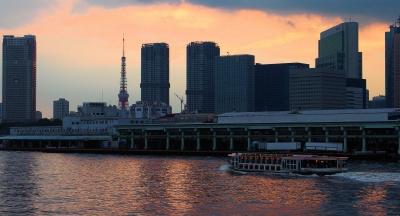
There were a lot of clouds, but I was able to see the dark water. It's a good view. After a little more, the Tokyo Tower will be turned on, and many houseboats will appear.
I was on the Sumida River Terrace and wanted to cool down in the evening, but I had to go to the station. I was forced to leave this place, walk to Kachidoki Station, and finish a short excursion.
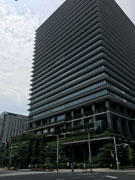
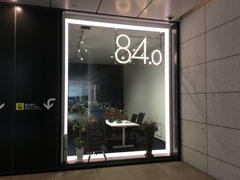
![]()
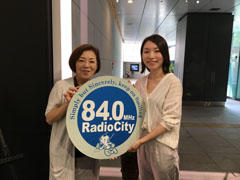
![]()
![]()
![]() of Chuo-ku more and more.
of Chuo-ku more and more.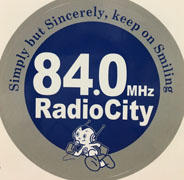
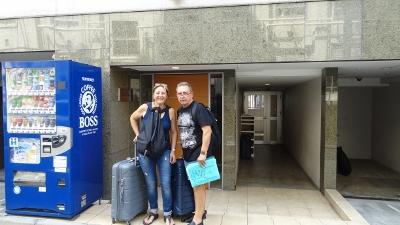
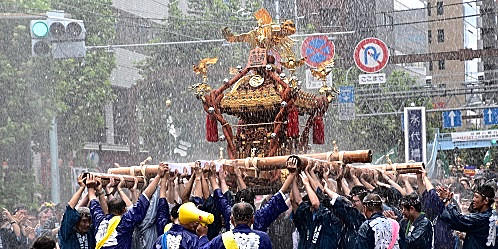
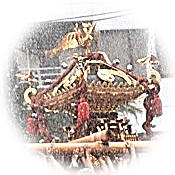 The festival of Tomioka Hachimangu Shrine is also called the Fukagawa Hachiman Festival, and it is said that in 1642, the celebration of the eldest son of Shogun Iemitsu (later Iezuna) was held. Along with the Sanno Festival of Hie-jinja Shrine and the Kanda festival of Kanda-jinja Shrine, it is counted as one of the three major festivals in Edo. It is famous for its first time in portable shrine, along with the screams of "portable shrine Fukagawa, floats Kanda, and dards of Sanno".
The festival of Tomioka Hachimangu Shrine is also called the Fukagawa Hachiman Festival, and it is said that in 1642, the celebration of the eldest son of Shogun Iemitsu (later Iezuna) was held. Along with the Sanno Festival of Hie-jinja Shrine and the Kanda festival of Kanda-jinja Shrine, it is counted as one of the three major festivals in Edo. It is famous for its first time in portable shrine, along with the screams of "portable shrine Fukagawa, floats Kanda, and dards of Sanno".